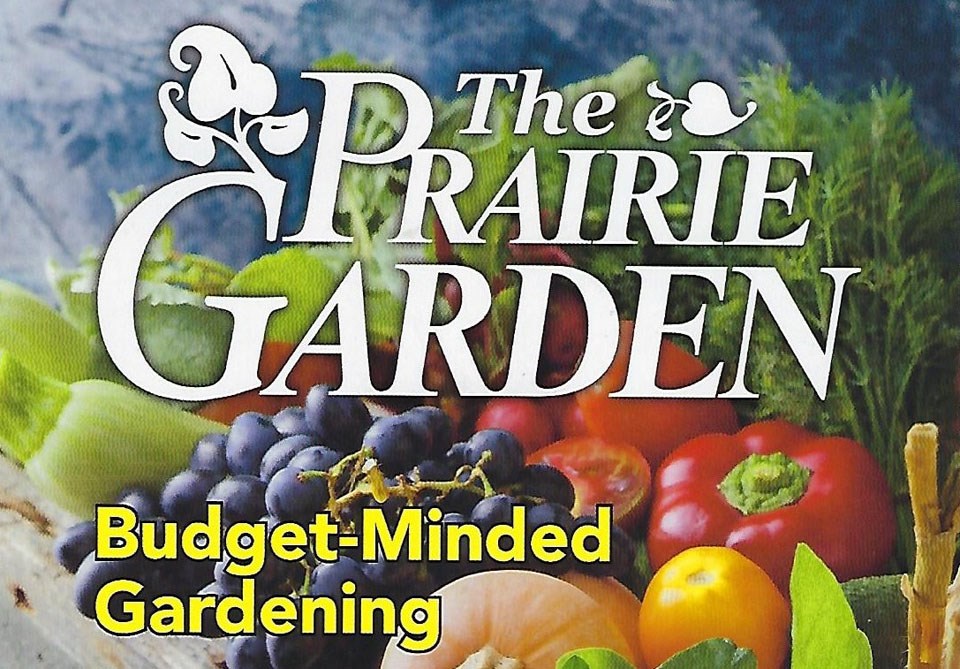The Prairie Garden is Western Canada's only garden annual and is published in Winnipeg, Mani. by a non-profit volunteer committee dedicated to the advancement of horticulture in the prairies. This year's theme of 'Budget-minded Gardening.' is right up my alley. And it probably comes at a good time for a lot of people in the face of the current economic pressures and food security challenges, with looming tariffs, possible job losses, and political uncertainty all around. Hopefully, most of the news is hot air and bluster and will soon melt into the background.
On to happier thoughts, “Spring is only six weeks away.” Wishful thinking, ha ha ha, and our gardens await our attention. In the interim, there is time for some garden-related reading and The Prairie Garden can provide that enjoyment. The Prairie Garden is available at McNally Robinson, at Early's and many local garden centres across the province. Call first to ensure they have a copy for you. You can also order it online through the website: www.theprairiegarden.ca
Over half of the 40 articles deal with ways to reduce spending on garden needs, be it from saving seeds and reducing watering costs to ideas of how to reuse and recycle garden materials such as sharing and dividing plants and reuse of pots.
Tim Wood suggests you can save time and money by planning your garden carefully and planting densely. That is, planting annuals, perennials and shrubs close together so they are effectively acting as a living mulch, preventing the sun from reaching the soil which will reduce weed growth. He suggests that some weeds can be left in between the dense plantings, providing mulch, thus reducing the need to purchase it. The same effect can be accomplished by planting shrubs that have horizontal spread via suckering, again providing a canopy to prevent weeds. The shrub approach needs careful planning with the required edging and hardscaping in place to reduce maintenance of unwelcome suckering into adjacent planting areas.
Sheryl Normandeau suggests that buying high-quality tools can save you money in the long run. She gives useful information on the yearly maintenance of those tools such as oiling, sharpening and correct storage to ensure a long life and ease of use.
Elizabeth Sellors provides us with information about creating a fruit tree “guild” or mini food forest. Beginning with a major food tree, such as an apple and then adding an under-story smaller trees, shrubs, and an herbaceous layer, one can also add a cover crop that can be grown as a living mulch and include vines. For each of these layers, she has suggestions for which plants to use. She is basing her design on zone 3a plantings, which we can easily adapt to our zone which l believe remains 3b.
Besides the budget-friendly articles, there are the general prairie articles that this annual publication is known for, such as what is new and upcoming in roses from Rick Durand. Hugh Skinner tackles the subject of winter hardiness. Learn all you want to know about growing lemons on the prairies from Donna Balzer, and yes they do have to come in for winter so the focus is on compact plants that can be easily moved around, not your taller specimens.
Chris Penner, a native plant biologist, takes us through his experience of installing native plant under storey vegetation below his existing oak trees - which seemed to be declining in a somewhat dry lawn landscape. Using low to medium-height species with a spreading habit, and mulching with natural wood mulch and leaf litter over the deteriorating lawn, the area took on an orderly well kept appearance. Over time the trees also appeared healthier. It is important to remove perennial weeds before planting and mulching. Pictures of the planting after the first and second year of planting show the progress of the pleasing landscape.
These are only a few snippets of what awaits you between the covers of this publication. Get your copy today and enjoy!
This column is provided courtesy of the Saskatchewan Perennial Society (SPS; saskperennial@hotmail.com). Check our website () or Facebook page () for a list of upcoming gardening events.




